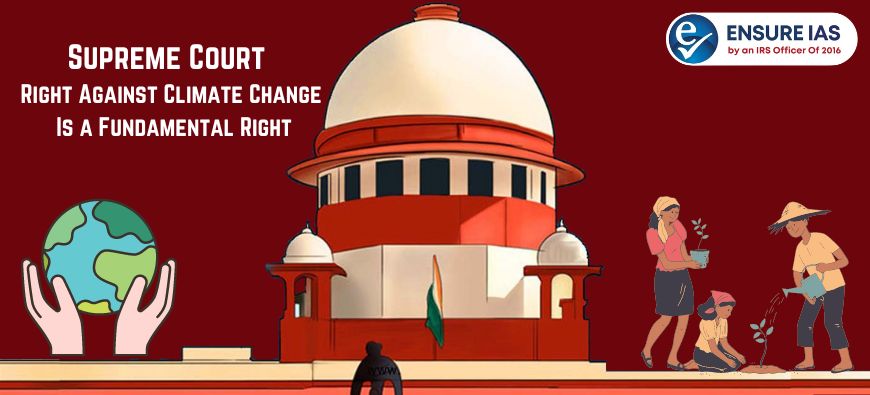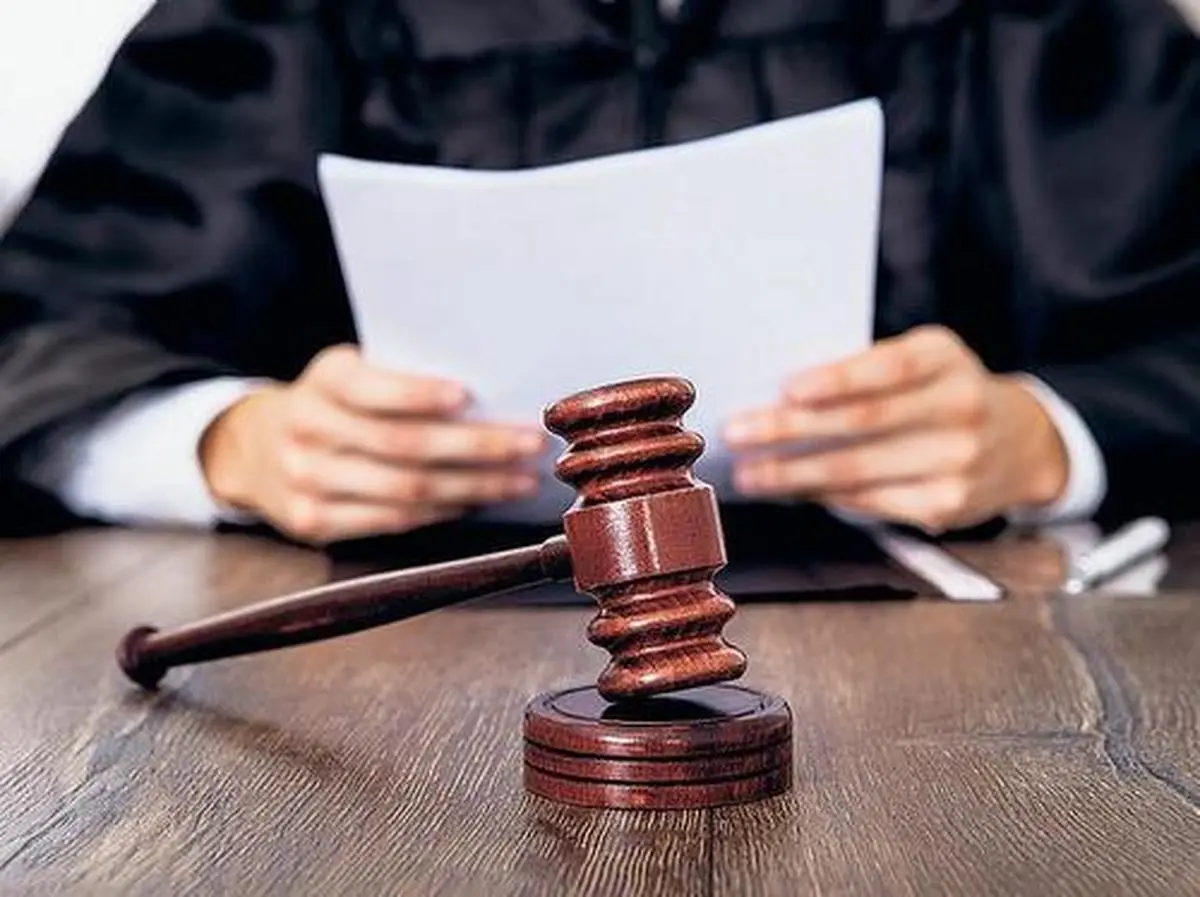- Courses
- GS Full Course 1 Year
- GS Full Course 2 Year
- GS Full Course 3 Year
- GS Full Course Till Selection
- Essay Target – 150+ Marks
- Online Program
- GS Recorded Course
- NCERT (Recorded 500+ Hours)
- Polity Recorded Course
- Geography Recorded Course
- Economy Recorded Course
- AMAC Recorded Course
- Modern India, Post Independence & World History
- Environment Recoded Course
- Governance Recoded Course
- Science & Tech. Recoded Course
- International Relations and Internal Security Recorded Course
- Disaster Management Module Course
- Ethics Recoded Course
- Current Affairs Recoded Course
- CSAT
- 5 LAYERED ARJUNA Mentorship
- Public Administration Optional
- ABOUT US
- OUR TOPPERS
- TEST SERIES
- FREE STUDY MATERIAL
- VIDEOS
- CONTACT US
Right Against Climate Change Is a Fundamental Right: Supreme Court
Right Against Climate Change Is a Fundamental Right: Supreme Court

- Recently, In the case of MK Ranjitsinh v. Union of India, the Supreme Court of India affirmed that individuals have a fundamental "right to be free from the adverse effects of climate change."
- This right is recognized through a combined interpretation of Article 14 (Right to Equality) and Article 21 (Right to Life and Personal Liberty) of the Indian Constitution.
Mk Ranjitsinh V. Union Of India
- In 2019, a petition (MK Ranjitsinh And Ors. v. Union of India) was filed to protect the Great Indian Bustards, a bird species whose population were declining.
- In April 2021, the Supreme Court ordered all power lines in the bird's habitat to be buried underground.
- However, due to practical difficulties and the importance of renewable energy, the court agreed to reconsider this decision.
- In 2024, while the Supreme Court underscored the importance of protection of Bustard, it modified its order with respect to conversion of overhead transmission line to underground transmission lines.
- Court has further said that other factors such as low fecundity (fertility), fragmentation, habitat loss, predators, and loss of prey must be addressed.
Court Observations
The court made several observations:
- Overhead cables, particularly in solar parks, pose a significant threat to the survival of these birds.
Power Line Mitigation, 2018 report highlighted that around 1 lakh birds die annually due to collisions with power lines.
Ministry of Power acknowledged the vulnerability of Great Indian Bustards to power lines due to their lack of frontal vision, emphasizing the risk of collision and electrocution.
- Supreme Court held that climate change affects the right to equality, the Court reasoned that “If climate change and environmental degradation lead to acute food and water shortages in a particular area, poorer communities will suffer more than richer ones. The right to equality would be impacted in each of these instances”.
- Article 21 of the constitution states that “no person shall be deprived of his life or personal liberty except according to procedure established by law”.
- Article 21 has received liberal interpretation from time to time after the decision of the Supreme Court in Maneka Gandhi vs. Union of India. Article 21 guarantees fundamental right to life, right to an environment, free of danger of disease and infection is inherent in it.
Outcomes Of The Judgment
- Fundamental Right to a Healthy Environment: The judgment acknowledged the right to a healthy environment, safe from the ill-effects of climate change, was a “fundamental human right”.
- Expanded Scope of Article 14: Judgment has expanded the scope of Article 14. It was observed that if climate change and environmental degradation lead to acute food and water shortages in a particular area, poorer communities will suffer more than richer ones.
- Influence on Public Discourse and Policy: This judgment will set an important legal precedent and will influence the broader public discourse on environmental matters and has the potential to shape future government policies.
- Balancing Environmental Protection and Renewable Energy: Judgment also highlighted the importance of solar power for arresting ills of climate change.
Conclusion
The Supreme Court's ruling in MK Ranjitsinh v. Union of India marks a significant milestone in environmental jurisprudence. By recognizing the right against climate change as a fundamental right, the court has strengthened the legal framework for environmental protection and climate action in India. This decision has the potential to inspire similar legal developments globally, advancing the cause of environmental justice and sustainable development.
FAQs
Q1. Consider the following statements:
1. Climate change might affect the right to equality.
2. Climate change might affect everyone’s Right to life.
Which of the statements given above is/are correct?
(a) 1 Only
(b) 2 Only
(c) Both 1 and 2
(d) Neither 1 nor 2
Ans. C
Q2. Which of the following Supreme Court cases deal with the protection of Environment:
1. Rural Litigation and Entitlement Kendra vs. State
2. M.C. Mehta vs. Union of India
3. Subhash Kumar v. State of Bihar
Choose the correct answer from the code given below:
(a) Only 1
(b) Only 2
(c) All 3
(d) None
Ans. D
Q3. Consider the following statements regarding Voter Verified Paper Audit Trail (VVPAT)
1. It serves as an independent verification system for voting machines, allowing voters to confirm that their votes were recorded accurately.
2. It contains the candidate's name and symbol for whom the vote was cast.
3. When a vote is cast, the VVPAT machine, attached to the Ballot Unit (BU) of the EVM, prints out a paper slip displaying the voter's choice for seven seconds, visible through glass.
Choose the correct answer from the code given below:
(a) Only 1
(b) Only 2
(c) All 3
(d) None
Ans.C



